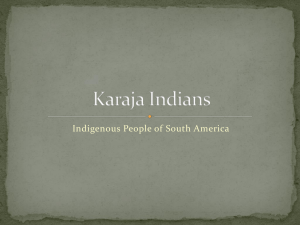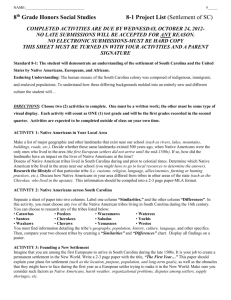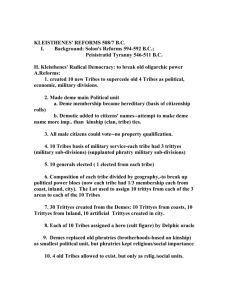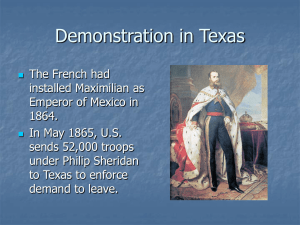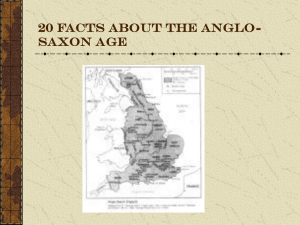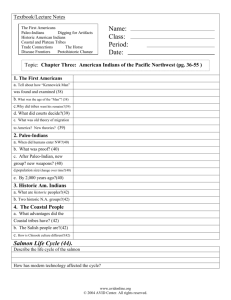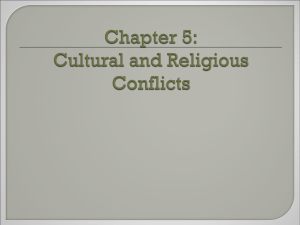Shake Shoccoree
advertisement
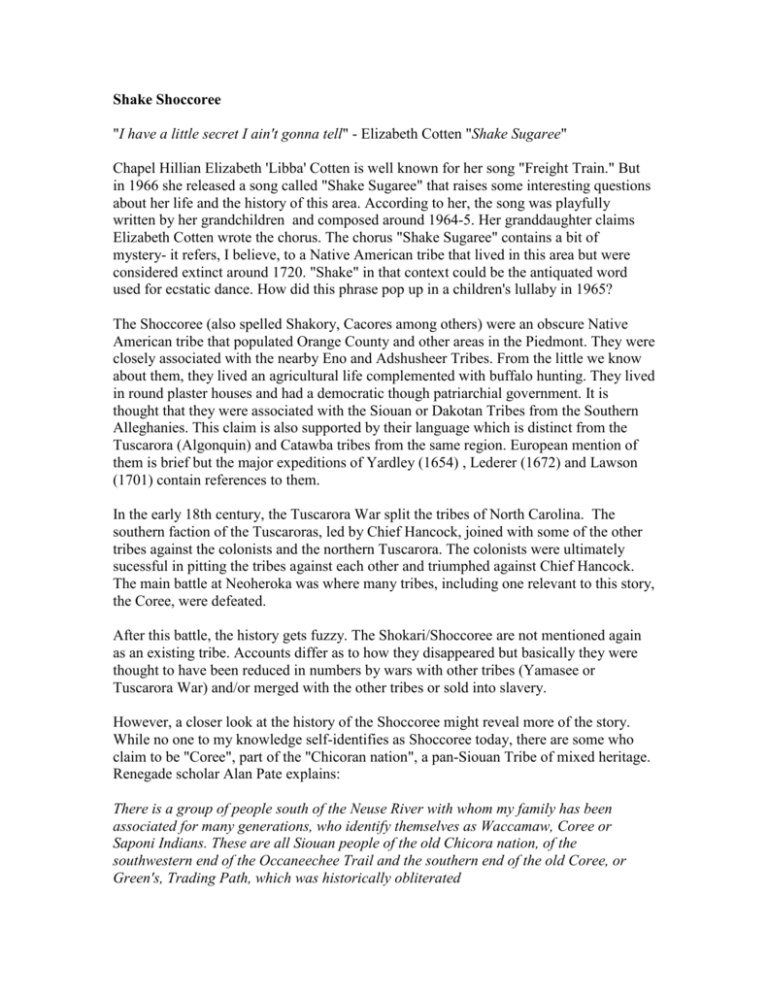
Shake Shoccoree
"I have a little secret I ain't gonna tell" - Elizabeth Cotten "Shake Sugaree"
Chapel Hillian Elizabeth 'Libba' Cotten is well known for her song "Freight Train." But
in 1966 she released a song called "Shake Sugaree" that raises some interesting questions
about her life and the history of this area. According to her, the song was playfully
written by her grandchildren and composed around 1964-5. Her granddaughter claims
Elizabeth Cotten wrote the chorus. The chorus "Shake Sugaree" contains a bit of
mystery- it refers, I believe, to a Native American tribe that lived in this area but were
considered extinct around 1720. "Shake" in that context could be the antiquated word
used for ecstatic dance. How did this phrase pop up in a children's lullaby in 1965?
The Shoccoree (also spelled Shakory, Cacores among others) were an obscure Native
American tribe that populated Orange County and other areas in the Piedmont. They were
closely associated with the nearby Eno and Adshusheer Tribes. From the little we know
about them, they lived an agricultural life complemented with buffalo hunting. They lived
in round plaster houses and had a democratic though patriarchial government. It is
thought that they were associated with the Siouan or Dakotan Tribes from the Southern
Alleghanies. This claim is also supported by their language which is distinct from the
Tuscarora (Algonquin) and Catawba tribes from the same region. European mention of
them is brief but the major expeditions of Yardley (1654) , Lederer (1672) and Lawson
(1701) contain references to them.
In the early 18th century, the Tuscarora War split the tribes of North Carolina. The
southern faction of the Tuscaroras, led by Chief Hancock, joined with some of the other
tribes against the colonists and the northern Tuscarora. The colonists were ultimately
sucessful in pitting the tribes against each other and triumphed against Chief Hancock.
The main battle at Neoheroka was where many tribes, including one relevant to this story,
the Coree, were defeated.
After this battle, the history gets fuzzy. The Shokari/Shoccoree are not mentioned again
as an existing tribe. Accounts differ as to how they disappeared but basically they were
thought to have been reduced in numbers by wars with other tribes (Yamasee or
Tuscarora War) and/or merged with the other tribes or sold into slavery.
However, a closer look at the history of the Shoccoree might reveal more of the story.
While no one to my knowledge self-identifies as Shoccoree today, there are some who
claim to be "Coree", part of the "Chicoran nation", a pan-Siouan Tribe of mixed heritage.
Renegade scholar Alan Pate explains:
There is a group of people south of the Neuse River with whom my family has been
associated for many generations, who identify themselves as Waccamaw, Coree or
Saponi Indians. These are all Siouan people of the old Chicora nation, of the
southwestern end of the Occaneechee Trail and the southern end of the old Coree, or
Green's, Trading Path, which was historically obliterated
Alan Pate's connection of the Coree with the Chicora (Shakori or Shoccoree) is hardly
rock solid. But if he's confused, he's not the only one:
... initial contact with Europeans began much earlier through a series of Spanish slave
raids along the Carolina coasts during the early 1500s which originated from Cuba and
Puerto Rico. One of these, led by Pedro de Quejo and Francisco Gordillo and funded by
Lucas Vasquez de Aylln, landed at Winyaw Bay SC in 1521 and captured 60 people.
Because of sickness, only a few of these prisoners lived to reach Cuba, but they lasted
long enough for the Spanish to learn that they called either themselves or their homeland
Chicora. One young warrior did survive the capture and voyage south, and after an
apparent conversion to Christianity, was renamed Francisco of Chicora. Francisco
volunteered to serve the Spanish as a guide and interpreter, and in 1525 Aylln sent Quejo
back to area with two ships and 60 men. Francisco accompanied the expedition, but the
Spanish had no sooner hit the beach than he took to the woods.
According to current wisdom, the Coree were a coastal tribe (where the Spanish were
trolling for slaves) and the "Chicora", if it is equivalent to the Shoccoree, were inland.
Scholars debate which tribe Francisco belonged to- could it be both? Could the Coree and
Chicora be federated, perhaps on linguistic lines?
But the story goes further- part of the speculation by contemporary Coree is that the
Chicoran nation may have been composed of many races, including Europeans
(particularly Welsh), Native Americans and Africans. This history relies on the
phenomenon of Europeans "going native" and becoming Indians.
Just like Francisco prefered native life, the entire Jamestown colony famously went to
"Croatan" in the 1580s. This phenomenon repeated itself often in Carolina for a variety
of reasons. Lawson records "English men and other Europeans that have been accustom'd
to the conversation of the savage women and their way of living have been so allur'd with
that careless sort of life as to be constant to their Indian Wife and her relations so long as
they liv'd without ever desiring to return again among the English; although they had
very fair opportunities of Advantages amongst their Countrymen; of which I know
several."
James Axtell's fascinating account of "White Indians of Colonial America" puts the count
at hundreds if not thousands of Europeans who became Indian. According to one journal
at the time, the White Indians "found Indian life to possess a strong sense of community,
abundant love, and uncommon integrity". Two other white Indians are recorded as
finding "the most perfect freedom, the ease of living, the absence of those cares and
corroding solicitudes which so often prevail with us."
One of the most colorful of these white Indians in this state was James Adair, who lived
with the Chickasaws for 35 years in the mid 1700s while composing his "History of the
American Indians" which argued for a Jewish origin of Native Americans (preColumbian european contact with Native Americans is a fascinating and bizarre topic -
see Al Pate's The Coree are Not Extinct for a discussion of possible early Welsh contact
in the Cape Fear). In addition to individuals, entire groups defied easy categorization into
nationalist or racial identities for a variety of reasons. So called "fugitive communities,"
like the pirate ports or the escaped slaves in the Great Dismal Swamp or Henry Berry
Lowry's Scuffletown in Robeson County, were scattered across North Carolina. Could
the Chicoran Nation be another?
Despite attempts to separate people into black and white, the people of the current day
Carolina Piedmont represent a wide spectrum of skin color, social customs and ethnic
heritage. But perhaps the dogmatic insistence on those terms was used to counterattack a
state of dangerous alliances across color lines. Research supports the idea that some
Europeans voluntarily abandoned their own nationalist and racial identities to join with
Native Americans and/or Africans. Such a notion of voluntary associations would
challenge the idea that native life was somehow inferior in comparison with European
culture and would have been an example to other Europeans that solidarity outside of
nationalistic lines was possible.
This isn't to argue that Cotten was a Native American or wasn't (she did claim partial
native ancestry in an interview with Alice Gerrard). It is to say that those categories, with
their focus on either/or polarities and racial purity obscure part of the radical history of
North Carolina. It is those imagined categories that, despite their inaccuracy, continue to
affect the lives of North Carolinians. Here Elizabeth Cotten, the granddaughter of freed
slaves, remembers an event from her youth in Chapel Hill:
When I was a little girl, my mother and father used to bury their meat. Rub it up and bury
it in the ground and put dirt back over it like we didn't have no meat. [Otherwise] the
white people would take it away from us. (US News and World Report, 1989)
It is hard to know what Elizabeth Cotten's relationship to the Shoccoree/Chicora/Sugaree
was. Perhaps this lullaby about dejected poverty, with its references to tobacco (twice), a
pipe, antiquated items like buggies and watch-chains and an obscure reference to an
extinct tribe was spontaneously created by her great grandchildren (although her original
statement that it was composed by her great grandchildren was contradicted by one of
those grandchildren who said that Elizabeth Cotten injected the chorus.) Perhaps it could
have been a local minstrel song or popular jingle that she adapted. Her amibguity on the
subject could be intentional as "mixed race communities" are still an extremely touchy
subject to speak openly about in the South, especially the Carolina piedmont.
Finally, consider this anecdote from 1701 that is eerily reminiscent of Elizabeth Cotten's
gentle musical tone and this strange form of music, the lullaby. It is an account by John
Lawson of an evening spent with the chief of the Shoccorees, Enoe Will after being
guided by the Chief through the Carolinas:
Our Guide and Landlord Enoe-Will was of the best and most agreeable Temper that ever
I met with in an Indian, being always ready to serve the English, not out of Gain, but real
Affection; ... He brought some of his chief Men into his Cabin, and 2 of them having a
Drum, and a Rattle, sung by us, as we lay in Bed, and struck up their Musick to serenade
and welcome us to their Town. And tho' at last, we fell asleep, yet they continu’d their
Concert till Morning
*the Sugaree were once identified as another tribe located near what is now Charlotte but
it is not clear that they are distinct from the Shoccoree or Shakori. Writing on this is
inconclusive and since both tribes vanished around 1720, historical accounts offer no
conclusion. Given the closeness of the phonetics, I'm inclined to think we are dealing
with the same word spelled differently by Europeans. A federated nation extending from
the coastal areas of NC up to the headwaters of the Neuse would seem to bolster Al Pate's
notion of the "old Chicora nation."
References:
Axtell, John, "White Indians of Colonial America" in William and Mary Quarterly, 3rd
Ser., Vol. 32, No. 1 (Jan., 1975), pp. 55-88.
Rights, Douglas, American Indian in North Carolina. Winston-Salem : J.F. Blair, c1988.
Faircloth Sr., J.L. "Turtle", Red Rain: The Coree Indians. Atlantic, N.C. : The author,
2001.
Fisher, Kirsten, Suspect Relations: Sex Race and resistance in Colonial North Carolina.
Ithaca : Cornell University Press, 2002.
Hawks, Francis, History of North Carolina. Fayetteville, N.C. : E.J. Hale & Son, 1859,
c1856.
Lawson, John, A New Voyage to Carolina http://docsouth.unc.edu/nc/lawson/menu.html
Lederer, John, The Discoveries of John Lederer.
http://rla.unc.edu/archives/accounts/Lederer/LedererText.html
Mooney, James, The Siouan tribes of the East. Washington : G.P.O., 1894.
Pate, Alan, The Coree are not extinct : discussion of some Indian, White, and Black
relationships in early America. Pikeville, N.C. (2420 Big Daddy's Rd., Pikeville 27863) :
A.F. Pate, c1993
Sakolsky, Ron, James Koehnline Gone to Croatan : origins of North American dropout
culture. Brooklyn, N.Y. : Autonomedia ; Edinburgh : AK Press, c1993.
Seeger, Mike. Shake Sugaree (liner notes)
http://media.smithsonianglobalsound.org/liner_notes/smithsonian_folkways/SFW40147.p
df
U.S. News and World Report Elizabeth Cotten. ('Ordinary Women of Grace': subjects of
the 'I Dream a World' photography exhibit). February 13, 1989.

